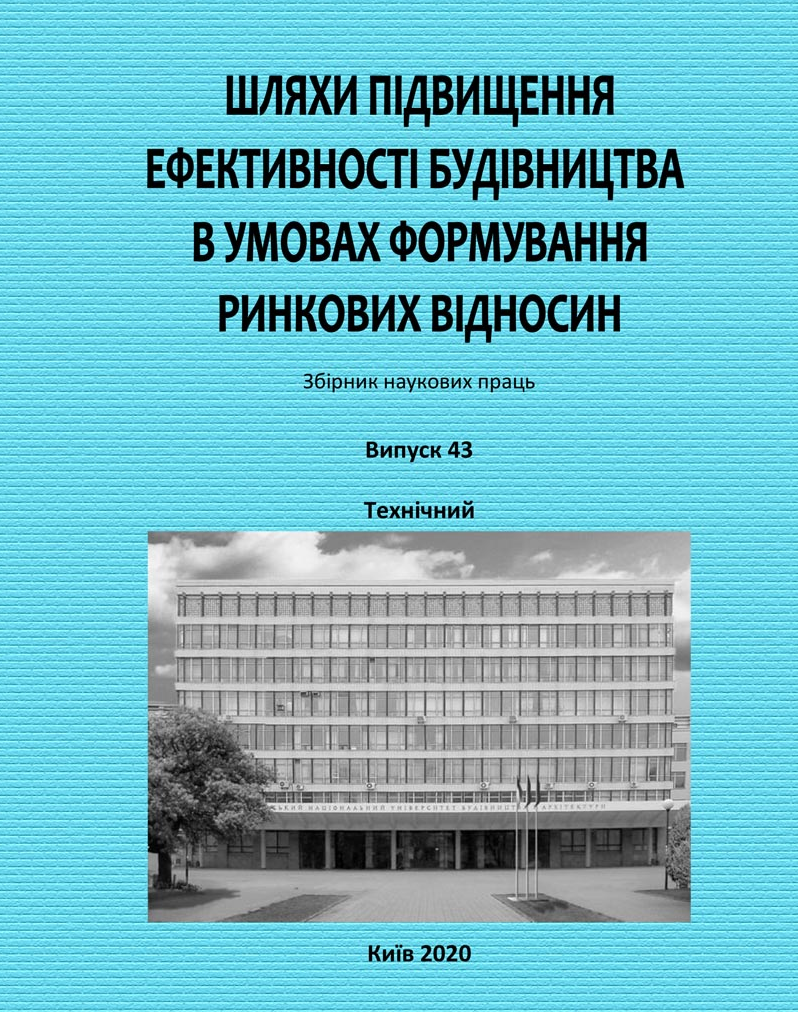Deterministic and non-deterministic factors affecting the initial data of tasks of optimization-organizational processes
DOI:
https://doi.org/10.32347/2707-501x.2020.43.59-66Keywords:
deterministic factors, non-deterministic factors, organization of construction, transportation, optimization and organizational processesAbstract
The article revealed the problem of the need to determine deterministic and non-deterministic factors, depending on the characteristics of each industry, which directly affect the formation of the initial conditions for the tasks of optimization and organizational processes.
Determination of determinism and determinants was given. After determining the concept of determinant factors, the main determinant factors in the construction industry were identified that directly affect the preparation of the conditions for the optimization and organizational processes of construction production. The systematization of determinants in the construction industry was carried out according to three types (factors depending on the transportation route; the factor depends on the characteristics of the vehicle, factors directly affecting the transportation time). The factors considered allow solving the problems of optimization and organizational processes in construction using both linear and dynamic programming.
After determining the main determinant factors in the construction industry, it becomes necessary to determine uncertainty factors or non-determinant factors in order to draw up initial conditions for optimization and organizational processes that are close to real conditions. A definition of non-determinism and non-determinant factors was given. The main types of non-deterministic factors, such as stochastic, static, interval, fuzzy, are considered. The main non-deterministic factors inherent in the construction industry, namely vehicle breakdowns, are identified; Accidents weather; road conditions over long distances; loading and unloading time; what time is the vehicle at the consumer after unloading; downtime due to non-payment; breakdowns of machines and mechanisms; low-quality materials; delays in subcontracting organizations; delay and dependence on government bodies (act on the opening of construction, bodies of electricity and gas supply networks) adjustments to design and estimate documentation depending on the selected materials or the wishes of the customer. The systematization of non-deterministic factors in the construction industry is carried out depending on their belonging to a certain type.
After analyzing the determinate and nondeterministic factors in the construction industry, it was determined that for the formulation of tasks of optimization and organizational processes in construction, dynamic programming of tasks for organizing the provision of construction objects is more suitable.References
Nedugov, G.V. & Nedugova V.V. (2009). “Veroyatnostnye analiticheskie tehnologii v sudebnoj medicine: bazovye matematicheskie modeli i prakticheskie prilozheniya “, 241.
Gladkov, L.A. & Gladkova, N.V. “Osobennosti i novye podhody k resheniyu dinamicheskih transportnyh zadach s ogranicheniem po vremeni”, Izvestiya YuFU,Tehnicheskie nauki, 178-187.
Korobov, P.N. (2002). “Matematicheskoe programmirovanie i modelirovanie ekonomicheskih processov: uchebnoe posobie”, 2, 364.
Kosenko, O.V. (2017). “Razrabotka metodov i algoritmov resheniya mnogoindeksnyh raspredelitelnyh zadach v usloviyah neopredelyonnosti [Teks]: dis. na soisk. uchen. step. kand. tehn. nauk (05.13.01)” , 172.
Moiseev N.N. (1975). “Elementy teorii optimalnyh sistem”, 528.
Levin V. I. (2012). “Metody optimizacii sistem v usloviyah intervalnoj neopredelennosti parametrov”, Informacionnye tehnologii, 4, 52–59.
Arutyunyan, I.A. & Kovalenko, M.G. (2019). “Osoblivosti programuvannya zadach optimizacijno-organizacijnih procesiv v budivnictvi za rahunok logistichnih metodiv”. Shlyahi pidvishennya efektivnosti budivnictva v umovah formuvannya rinkovih vidnosin, 1, 114-119.
Radkevych, A., & Arutiunian, I., (2014). Organization of material support system for construction. Science and progress of transport. 3 (51). 146-159.
Arutiunian, I. (Ed.) (2017). The scientific basis for development of the construction industry in Ukraine. Zaporizhzhia, Ukraine: ZSEA.
Pavlov, I., Poltavets, M. & Pavlov F. (2018). Systematic management of production systems in construction. Scientific News of the University of Dal : electronic scientific professional publication. 14. URL:https://nvdu.000webhostapp.com/arxiv/2018_14/pdf/12.pdf . 5 p.
Downloads
How to Cite
Issue
Section
License
Copyright (c) 2020 I. Аrutiunian, М. Kovalenko

This work is licensed under a Creative Commons Attribution 4.0 International License.
Authors who publish with this journal agree to the following terms:
- Authors retain copyright and grant the journal right of first publication with the work simultaneously licensed under a Creative Commons Attribution License that allows others to share the work with an acknowledgement of the work's authorship and initial publication in this journal.
- Authors are able to enter into separate, additional contractual arrangements for the non-exclusive distribution of the journal's published version of the work (e.g., post it to an institutional repository or publish it in a book), with an acknowledgement of its initial publication in this journal.
- Authors are permitted and encouraged to post their work online (e.g., in institutional repositories or on their website) prior to and during the submission process, as it can lead to productive exchanges, as well as earlier and greater citation of published work (See The Effect of Open Access).

